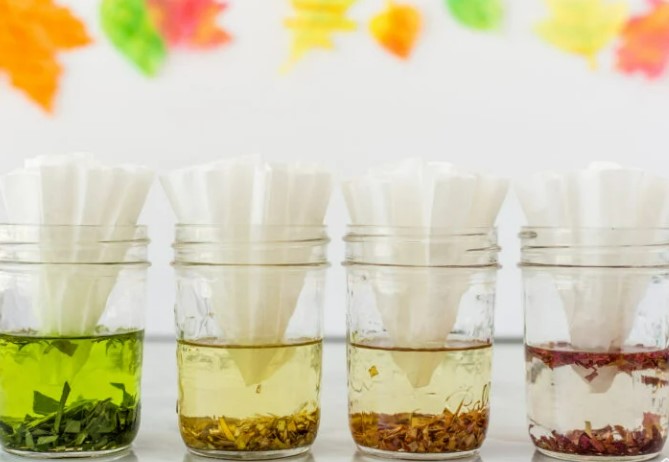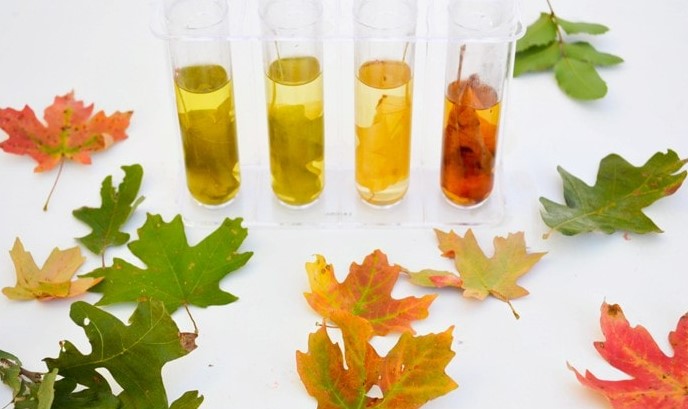 |
Science talk With Chris Duggan House of Science |
Have you ever sat in a garden or looked at the park and noticed all the different colours that plants have? In this fun activity, you can learn all about nature's colours and the different pigments that give each plant its unique colour.
Please note – this activity involves collecting and handling leaves and hot water. Please ask an adult to help.
Materials:
- Leaves and/or petals from your garden
- Small cups
- Bigger trays or containers to put the cups in
- Small jug
- Scissors
- Isopropyl alcohol (from the chemist or a hardware store)
- Paper
Instructions: 1. Collect a few different types of leaves from your garden. Don't pick spiky or tough leaves as you will need to cut them up in the next step. If you want, you can also use flower petals.
2. Cut up each type of leaf into small pieces and then put each type of leaf into a separate cup. If a leaf is hard to cut up, try a different leaf instead as we don't want you to hurt yourself.
3. Pour some isopropyl alcohol into each cup, using just enough to cover the leaves.
4. Place the cups onto trays.
5. Use a small jug to pour hot (not boiling) water into the trays to warm the cups up.
6. Cut up strips of paper about 2cm wide and long enough to fold over the rim and reach the bottom of the cups, and place one strip of paper into each cup.
7. When everything is set up, wash your hands, and then leave the cups and paper strips overnight.
8. Take out the paper strips and lay them out on a clean surface. What do you see?
The Science:
Plants come in all kinds of colours. From flowers to fruit, there are heaps of colourful plant parts to look at. Added to this, plants use their green leaves to turn sunlight into energy. It shouldn't come as a surprise that plants are packed with colourful chemicals. These are called pigments.
By cutting the plant leaves and soaking them in isopropyl alcohol, the pigments are dissolved into the alcohol. Warming the cups speeds up this process. When we put paper into this leafy liquid, the alcohol moves up the paper and the colourful pigments get pulled along for the ride. The pigments end up at different spots due to their different properties: the most easily dissolved and slightly smaller pigments make it further up than the larger less soluble ones.
So, what chemicals can you spot in your strips?

Photo: Supplied.
All plants use chlorophyll to turn sunlight into food, but did you know there are two main types of chlorophyll that can be found in green leaves?
Chlorophyll A is a dark green colour and Chlorophyll B is a yellowish green. Chlorophylls are large molecules, are hard to dissolve, so they will not travel far up the paper.
Carotenoids make plants look red, orange, or yellow. For example, beta-carotene gives carrots and kumara their orange colour.

Photo: Supplied.
Flavonoids are the pigments that make red, blue, yellow, and purple. The most common flavonoid is anthocyanin which is the red we see in apples, roses, and autumn leaves.
Finally, is betalains which gives some plants red and yellow colours.
Carotenoids, flavonoids and betalains are easier to dissolve than chlorophyll and will travel further up the paper strip.

